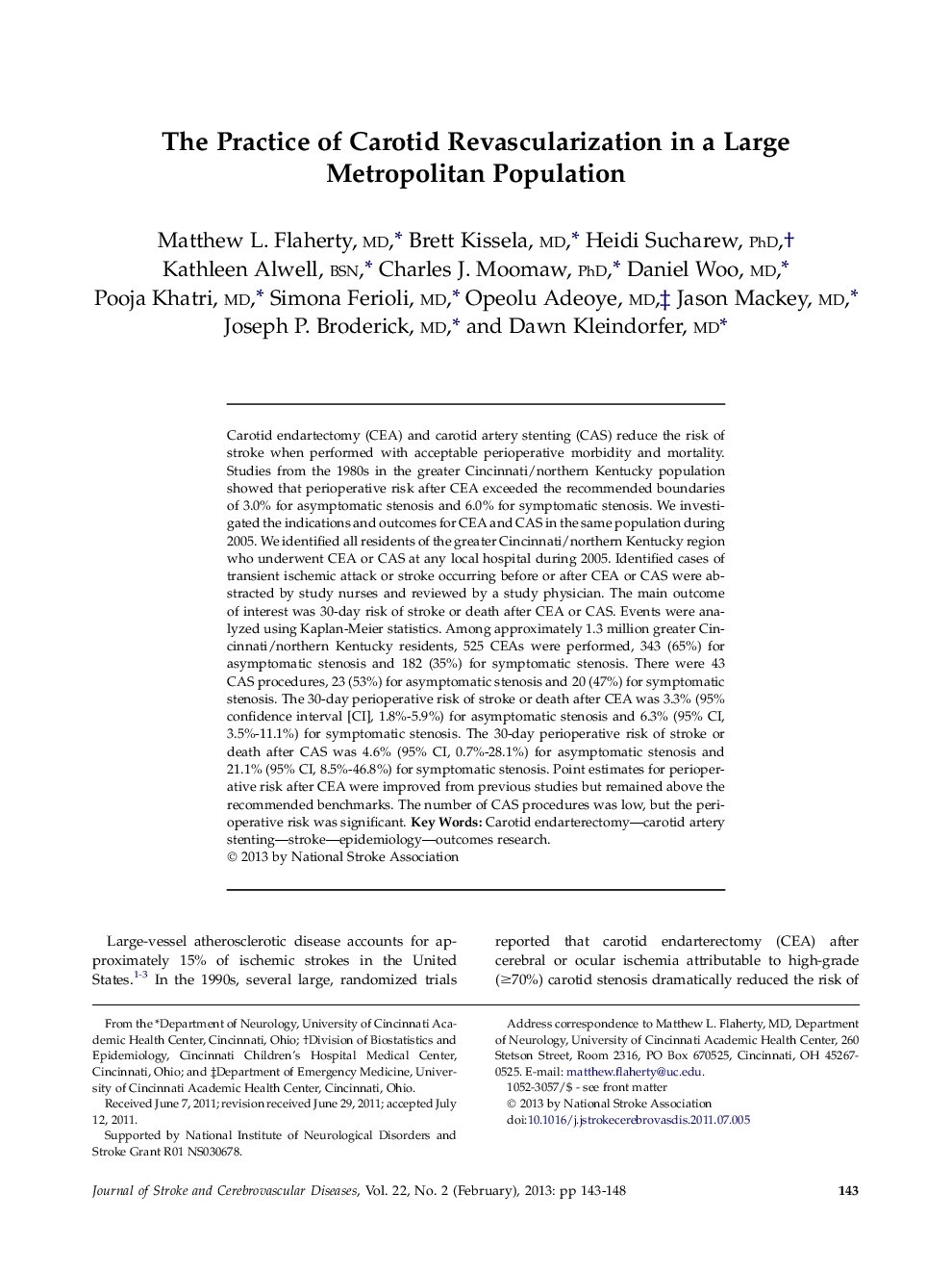| Article ID | Journal | Published Year | Pages | File Type |
|---|---|---|---|---|
| 2704263 | Journal of Stroke and Cerebrovascular Diseases | 2013 | 6 Pages |
Carotid endartectomy (CEA) and carotid artery stenting (CAS) reduce the risk of stroke when performed with acceptable perioperative morbidity and mortality. Studies from the 1980s in the greater Cincinnati/northern Kentucky population showed that perioperative risk after CEA exceeded the recommended boundaries of 3.0% for asymptomatic stenosis and 6.0% for symptomatic stenosis. We investigated the indications and outcomes for CEA and CAS in the same population during 2005. We identified all residents of the greater Cincinnati/northern Kentucky region who underwent CEA or CAS at any local hospital during 2005. Identified cases of transient ischemic attack or stroke occurring before or after CEA or CAS were abstracted by study nurses and reviewed by a study physician. The main outcome of interest was 30-day risk of stroke or death after CEA or CAS. Events were analyzed using Kaplan-Meier statistics. Among approximately 1.3 million greater Cincinnati/northern Kentucky residents, 525 CEAs were performed, 343 (65%) for asymptomatic stenosis and 182 (35%) for symptomatic stenosis. There were 43 CAS procedures, 23 (53%) for asymptomatic stenosis and 20 (47%) for symptomatic stenosis. The 30-day perioperative risk of stroke or death after CEA was 3.3% (95% confidence interval [CI], 1.8%-5.9%) for asymptomatic stenosis and 6.3% (95% CI, 3.5%-11.1%) for symptomatic stenosis. The 30-day perioperative risk of stroke or death after CAS was 4.6% (95% CI, 0.7%-28.1%) for asymptomatic stenosis and 21.1% (95% CI, 8.5%-46.8%) for symptomatic stenosis. Point estimates for perioperative risk after CEA were improved from previous studies but remained above the recommended benchmarks. The number of CAS procedures was low, but the perioperative risk was significant.
